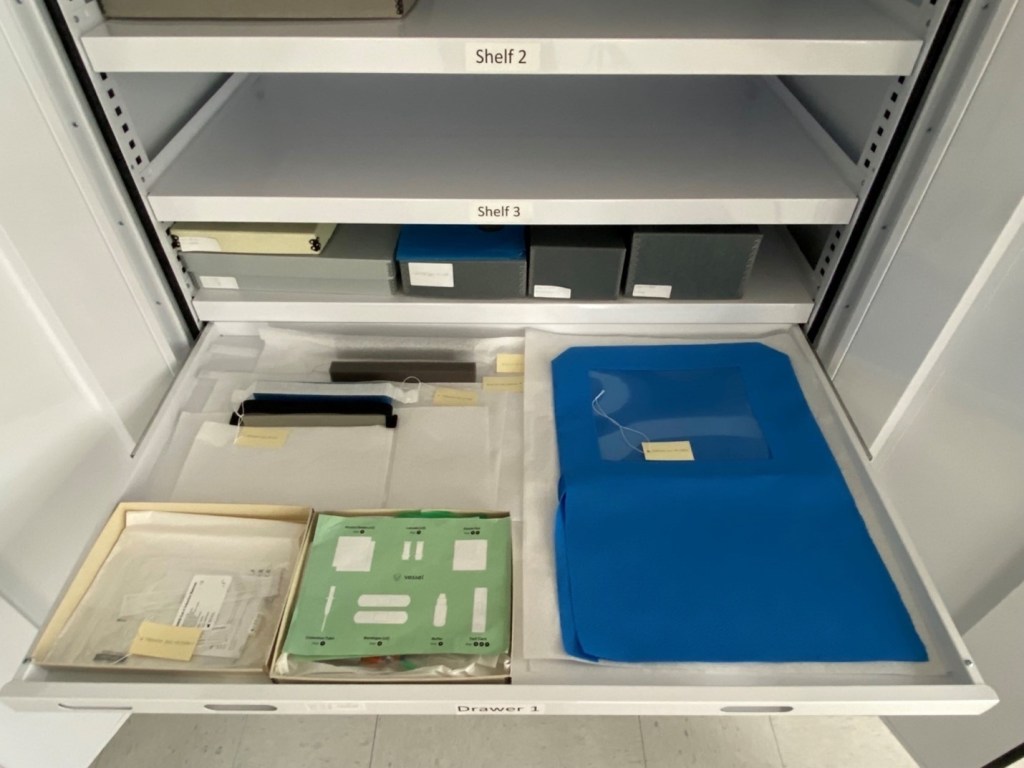
The National VA History Center (NVAHC) currently has a staff of just two full-time employees. Senior Curator, Robyn Rodgers, and I make up the team, but we have accomplished some important work through interns and graduate assistants to prepare them as history professionals.
Amy Ackman was our first graduate assistant. Amy came to us through the Public History program at Wright State University. During her time at the NVAHC, she managed the COVID artifact acquisition project, and she inventoried the initial objects acquired for the collection. Amy inventoried approximately 700 objects during her assistantship. She also accessioned the COVID objects into the collection and put them in proper storage boxes. Here are some of Amy’s thoughts on the COVID project and her time at the History Center.
Intern Olivia Holly-Johnson then utilized Amy’s work, making the COVID related objects available through an online exhibit. Olivia served as an intern through the Virtual Student Federal Internship (VSFS) program, where students work remotely on projects for federal agencies. History programs in the three VA administrations utilize VSFS interns to write articles, perform research, conduct oral interviews, and develop exhibits. Interns have contributed to many VA history projects including the 100 objects initiative. Oliva shares her experience below.
VA History is supported by talented students, who are preparing themselves for careers in public service. We in turn pass on our years of knowledge and experience to the next generation. It is very rewarding to see students grow as they are given opportunities to contribute. This is truly a win-win for the students and the history center.
By Kurt Senn
Curator, National VA History Center
Share this story
Related Stories

Curator Corner
Bringing them Home: America’s WWII Burial Program
VA History is defined by public service to those who have fought for this country. For nearly 250 years, Americans have responded to the challenges Veterans face in innovative ways. But what happens for those who do not return home? This is the story of three Americans who paid the ultimate sacrifice fighting fascism in Europe, how each one was honored after death, and how the VA History Office is preserving their story.

Curator Corner
The Story Behind the National Homes’ Seal
The National Home for Disabled Volunteer Soldiers turns 160 years old in 2025. The campuses are the oldest in the VA system, providing healthcare to Veterans to this day.
At the time of their establishment, they were the first of their type on this scale in the world. Within the NHDVS seal is the story that goes back 160 years ago.



